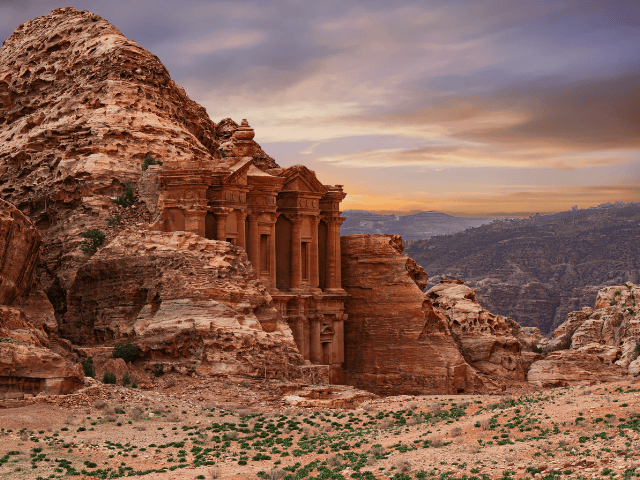
Petra, Jordan
Exploring the Ancient Ruins
Nestled in the rocky landscape of southern Jordan, Petra is one of the world’s most iconic ancient ruins. Known as the ‘Rose City’ due to the color of the stone used to build it, Petra was once a thriving metropolis and an important center of trade in the region. The site, which is a UNESCO World Heritage site, is a testament to the skill and ingenuity of the Nabataean people, who carved the city out of solid rock more than 2,000 years ago. Today, visitors from around the world come to explore Petra’s intricate tombs, temples, and monuments, and to marvel at the natural beauty of the surrounding landscape. If you’re looking to visit Petra, it helps to have an itinerary in mind.
Petra Itinerary:
Day 1:
- Arrive in Petra in the morning.
- Start your visit at the Petra Visitor Center to get an overview of the site and its history.
- Begin your exploration of Petra by walking through the Siq, the narrow canyon that leads to the Treasury. This is one of the most iconic sights in Petra, and it’s worth taking your time to admire the intricate carvings and natural beauty of the canyon.
- After visiting the Treasury, continue on to the Street of Facades, which is lined with elaborate tombs and monuments.
- Take a break for lunch in one of the local restaurants.
- In the afternoon, visit the Royal Tombs and the Monastery. The Monastery is one of the most impressive monuments in Petra, and it’s a steep hike to get there, but the views are worth it.
- After a full day of exploring, head back to your hotel for dinner and rest.
Day 2:
- Start your day early and head to the High Place of Sacrifice. This is a scenic hike that takes you up to a viewpoint overlooking the entire site.
- After the hike, return to the main site to visit the Roman Theater, the Colonnaded Street, and the Qasr al Bint.
- Take a break for lunch in one of the local restaurants.
- In the afternoon, visit the Petra Church and the Byzantine Church. These are some of the best examples of early Christian architecture in the region.
- After a full day of exploring, head back to your hotel for dinner and rest.
What to wear:
- Petra is located in a desert, so it’s essential to wear comfortable and breathable clothing. Lightweight cotton clothing is recommended.
- A good pair of walking shoes is a must, as there is a lot of walking involved.
- A hat or a scarf to protect your head from the sun, and sunglasses are also recommended.
Tips:
- Petra is a large site, and it’s easy to get lost, so it’s a good idea to hire a guide for your visit.
- Petra can get very hot in the summer months, so it’s best to start your visit early in the morning or in the late afternoon.
- Bring plenty of water, as it’s not easy to find in the site.
There are several ways to book a trip to Petra, including:
- Booking through a travel agency: This is a convenient option, as a travel agency can handle all aspects of your trip, including flights, accommodation, transportation, and tours. They can also help you plan your itinerary and make any necessary arrangements.
- Booking through an online travel booking website: This is another convenient option, as you can easily compare prices and options from multiple providers. Some popular online travel booking websites include Expedia, Booking.com, and Tripadvisor.
- Booking directly with the hotel or tour operator: This can be a good option if you prefer to have more control over your itinerary and budget. You can find many tour operators and hotels in Petra on their website or on social media.
As for the best time to go, it depends on what you are looking for in your visit.
- Spring (March to May) and autumn (September to November) are the best times to visit Petra, as the weather is mild and the crowds are not as heavy as in the summer months.
- Winter (December to February) can also be a good time to visit if you don’t mind the colder temperatures. However, some trails and monuments may be closed due to snow or ice.
- Summer (June to August) can be very hot in Petra, and it’s not recommended as the temperature can reach up to 40°C, it’s also the busiest time of the year.
Please also note that, as with many destinations, the COVID-19 pandemic has affected the travel industry and it’s best to check the current travel restrictions and guidelines before booking your trip.



.png)
.png)












